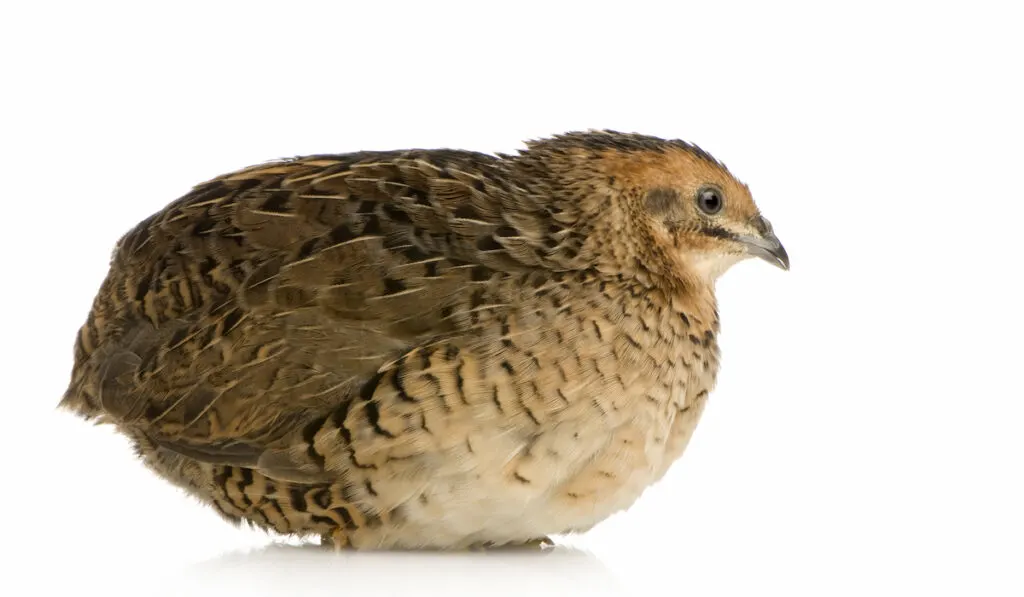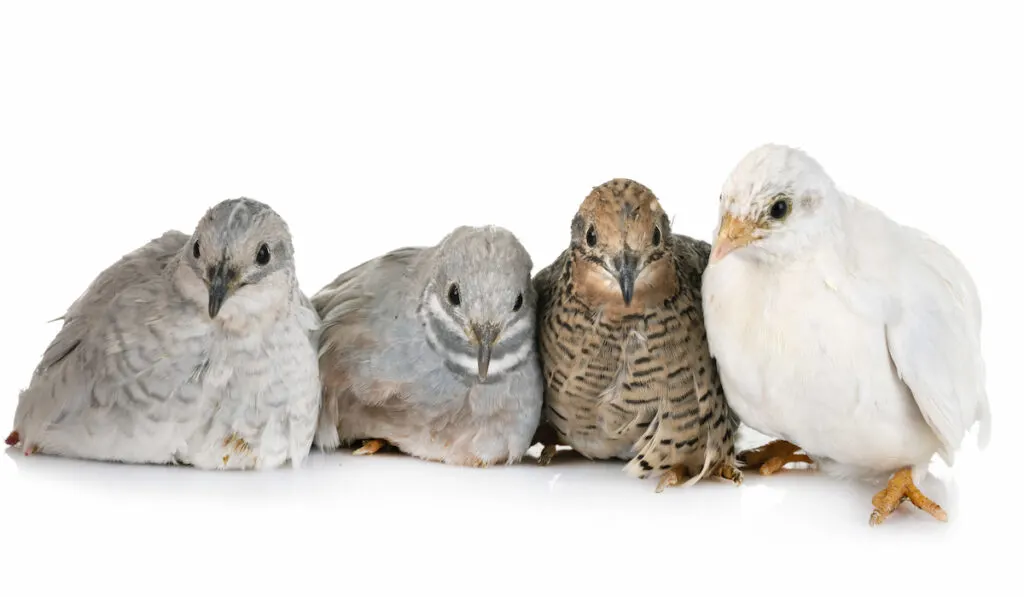Quail meat has a high nutrient percentage and very low fat content so it is considered an good source of meat. A lot of people want to raise poultry birds at home. If they are properly taken care of, quails can be very fruitful in their supply of both meat and eggs.
But out of more than a hundred quail species, deciding which breed to keep is not an easy task. Not all quail species are edible or easy to raise at a farm. You must have some knowledge about their natural habitat, feed, size, fecundity, and temperament, to make the right decision.
This article holds everything you need to know about the top three best quail breeds to raise for meat.
Table of Contents
1. Coturnix Quail

Coturnix quails are also known by the names of Japanese quail, Jumbo Quail, and Or Pharaoh Quail. The Coturnix Quail belongs to the Old World Quail category and is considered the best breed for meat and eggs. They can be a great source of some good quality meat and eggs.
Reaching maturation at seven weeks makes them an extremely fast-growing bird. Their eggs don’t take longer than 18 days to hatch so you will not have to wait for months to enjoy their eggs and meat.
Coturnix has a good body size and weight as compared to other breeds. At maturity, they can weigh between 4.9 to 5.6 ounces.
Another trait that makes them extremely compatible with the home environment is their temperament. They are very easy-going and calm. They tend to be solitary birds so they do not require a lot of extra attention.
The popular Coturnix Quail types include:
- Tibetan
- Rosetta
- Golden Coturnix
- White English
- Tuxedo
- Jumbo Coturnix
Coturnix Quails are easy to raise at home or a small farm along with other chickens and animals. They just require the basic requirements to remain healthy and happy.
You just need to take care of few things: The area you are keeping them in must be well aerated, clean water must be available all the time, and their feed needs to consist mostly of proteins. A high-protein game feed will be enough for them.
The best Coturnix Quail species for meat is the Texas A&M. It can reach up to 9.9 ounces. in only seven weeks.
2. Bobwhite Quail

Bobwhite Quails are a dual-purpose bird raised for meat and eggs and also for sport.
But to gain all these benefits you will have to wait for six months until maturation. Bobwhite Quail takes comparatively longer to mature. Once mature, they can lay year around. Their eggs take around 23 days to hatch.
They have beautiful plumage: a combination of black, brown, and yellow. The maximum weight they can reach is around 6 ounces.
These birds have characteristic head feathers, different for males and females. Males have a white patch under the neck while females have light brown feathers.
You can feed them a diet including fruits, seeds, and small insects. They love being in weedy fields and open woodlands where they can roam around of their will.
Your objective behind raising Bobwhite Quail will determine the conditions you provide them. If that objective is meat production, you need to provide enough space, healthy feed, and water to them.
Typically they are raised under controlled conditions of temperature and light. Lights are usually kept low to reduce their activity and also improve feed conversion.
Young quails can drown even in shallow water. Always cover the water containers to prevent young chicks from drowning.
Two things that you need to keep in mind when raising Bobwhite Quails are:
- It is best to keep Bobwhite Quails in pairs because of their aggressive behavior during the breeding season.
- Do not let them free-range as they are easily startled. Keep them in cages or under nets to prevent them from flying away.
Other than being raised for meat production, Bobwhite Quails are also known for their great speed and spontaneity. These factors make them a highly appropriate game bird as well.
3. Button/King Quail

Another Old World Quail species, King Quail is also known as the Asian-blue Quail, Blue-breasted Quail, Button Quail, or the Chinese Painted Quail. They are an important quail breed raised for meat because of their excellent quality meat and eggs.
You will have to wait till around 12 weeks for them to mature and they do not live for long so they are not very profitable in terms of egg production, but are a good source of meat.
This beautiful breed, King Quail weighs around 2 ounces at maturity. The male quails come in various beautiful shades of blue, brown, silver, and browns. While females have the characteristic brownish feathers.
Providing good feed and proper water management is a crucial part of successful quail farming. They can feed on corn, sunflower cake, soya meals, fish meal, and sorghum.
Being native to warm climates, you will have to be careful about the temperature. They prefer living in warm areas and they do not do well in colder temperatures.
Either at home or on a farm, the birds you raise must not be under stress. Stress can severely affect meat and egg productivity. You must provide a healthy environment to help quails flourish.
They can be quite aggressive during the breeding season. So keeping them in pairs is very important.
The most famous trait of King Quail is their temperament. Also known as the pet quail, King Quail are easy to keep at home. Being a comparatively quieter breed they will not trouble you much. You can easily raise them in your courtyard, keeping in mind the conditions they require.
Conclusion
Quails can be an exciting and profitable bird to add to your home farm repertoire.
There are tons of breeds to choose from when deciding what kind of quails to begin raising. Be sure to keep in mind what your goals are when deciding what breed to buy.
The most important thing with any animal you bring into your homestead is to make sure you are providing them with a safe home with all the nutrients they need. And don’t forget to have fun!
